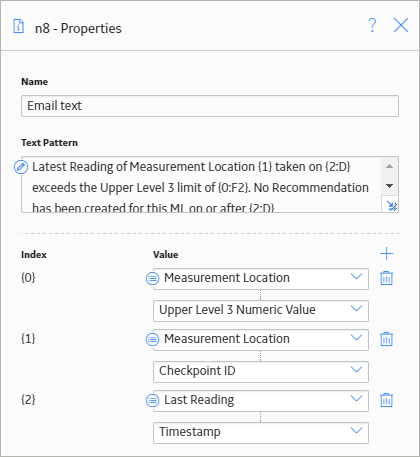The Properties window for a Text node contains the items that are described in the following table.
|
Item |
Description |
Notes |
|---|---|---|
|
Text Pattern box |
Defines the pattern for the custom text string that will be the output of the Text node. |
You must enter a valid .NET String.Format expression in this box. When you create the text pattern, the index numbers you use must be sequential starting at zero. However, the numbers do not have to be listed sequentially within the string and each number can be used multiple times. |
|
Index / Value section |
Specifies the value that each index specified in the Text Pattern box represents. |
When the node is executed, the indexes in the text string will be replaced with the corresponding values you specify in this section. IMPORTANT: You must define values for all indexes defined in the Text Pattern box. You can select You can use the Note: Constant values to represent dates (e.g., now, today, Sunday, October, etc.) or specific values (e.g., Pi or e) are not supported in this section. To use these one of these constants, you must define it using a Constant or Point Value node with an appropriate type. |

